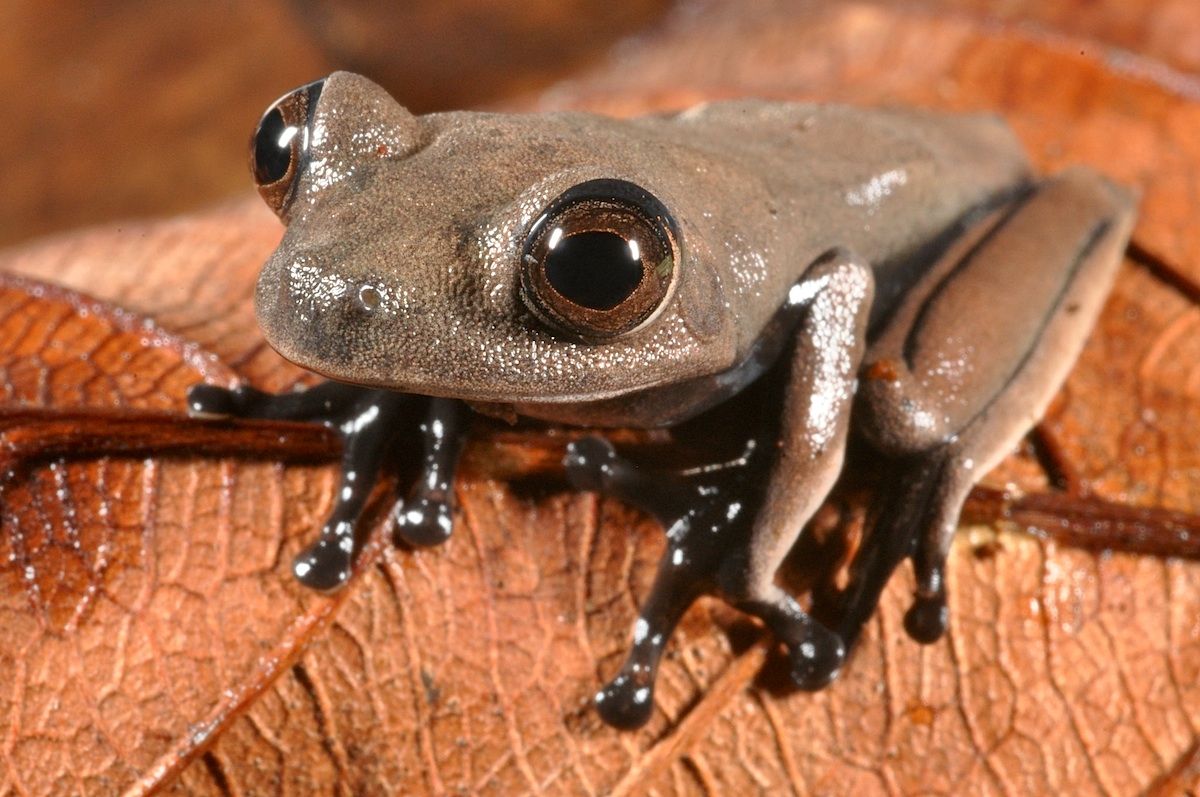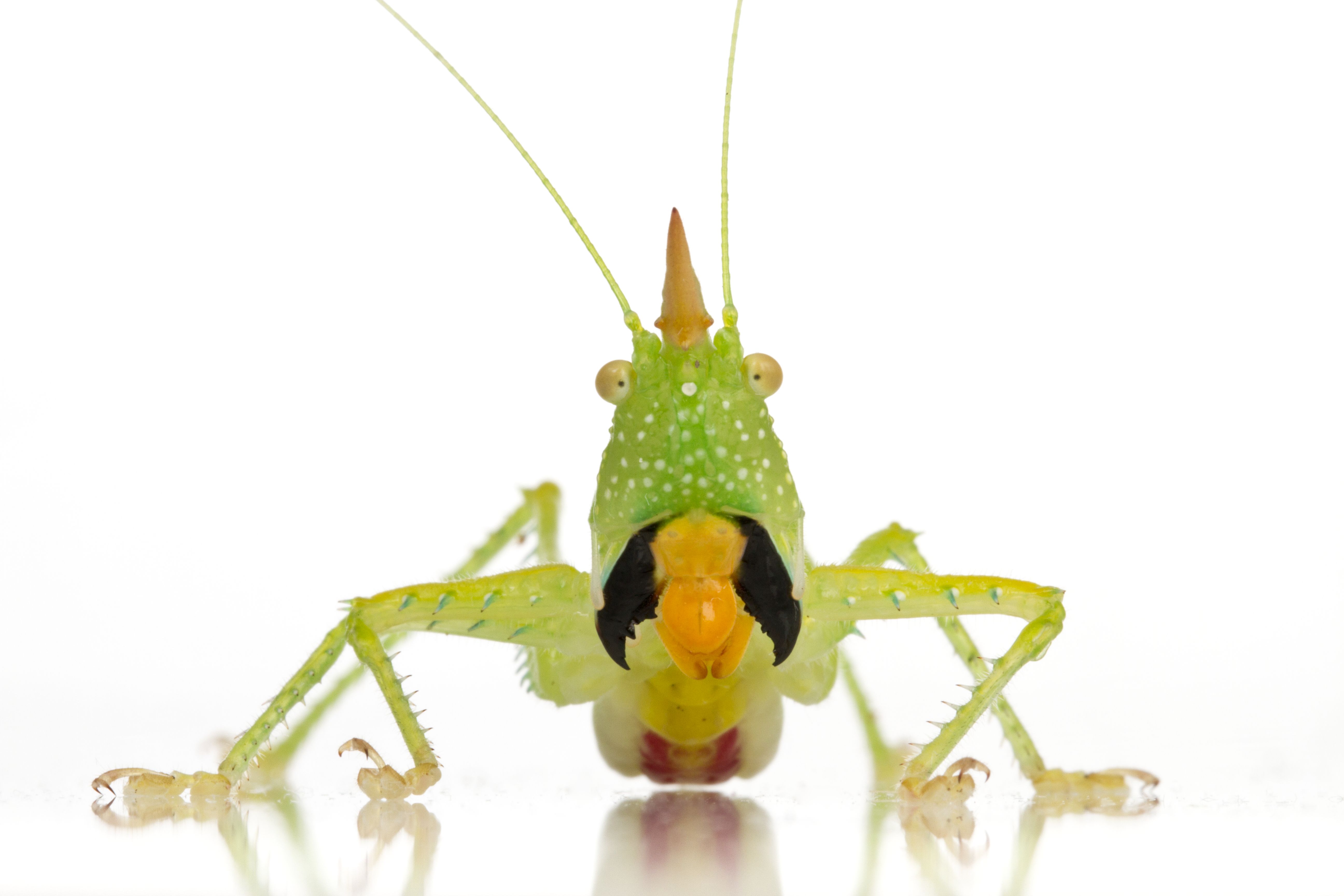Cocoa Frog Among New Species Discovered in 'Pristine' Ecosystem

A chocolate-covered frog and one of the tiniest dung beetles ever found are among the new species discovered during a survey of what scientist called one of the most "pristine" environments left on Earth.
The location? Southeastern Suriname, a dense South American Eden for rain forest species. Scientists led by Conservation International's Rapid Assessment Program spent three weeks in the region in 2012, surveying animal and plant species and testing water quality.
"I have conducted expeditions all over the world, but never have I seen such beautiful, pristine forests so untouched by humans," expedition leader Leeanne Alonso, now with the organization Global Wildlife Conservation, said in a statement. "Southern Suriname is one of the last places on Earth where there is a large expanse of pristine tropical forest." [See photos of the amazing animals of the Suriname forests]
New species
In that expanse, Alonso and her colleagues found 60 species that are likely new to science. Among them was the cocoa frog, a tree-climber of the genus Hypsiboas named for its chocolate-colored skin. Researchers also got out their magnifying glasses to uncover the Lilliputian beetle, a teeny-tiny insect measuring just 0.09 inches (2.3 millimeters) long. The antlered red beetle is likely the second-smallest dung beetle species in South America, the researchers reported.
"Dung beetles play critical ecological roles that help support healthy ecosystems," Trond Larsen, the director of the Rapid Assessment Program, said in a statement. "By burying dung, they regulate parasites and disease, disperse seeds and recycle nutrients to promote plant growth."
The expedition also turned up five other potentially new frog species, many insects and one snake. There were 11 unfamiliar fish species, including a new tetra fish and several catfish, Conservation International reported. Several of the new insects were leggy katydids, most in shades of green. One of the potentially new katydids seems to mimic a dead leaf with its curved torso and brown coloration.
Sign up for the Live Science daily newsletter now
Get the world’s most fascinating discoveries delivered straight to your inbox.

No less impressive were the species already known to science recorded in the area. They include the pale pink worm lizard (Amphisbaena vanzolinii), rarely seen aboveground, and the brightly-colored tiger leg monkey frog (Phyllomedusa tomopterna), which earns its moniker from its orange-and-black underbelly and limbs.
Scientists even lent one species a helping hand: When a juvenile dusky parrot (Pionus fuscus) fell into the river, they fished the bird out and let it dry at their camp. After a few hearty meals, the yellow-beaked parrot headed back into the forest.
An important ecosystem
Southeastern Suriname is important above and beyond its role as a biodiversity hotspot, the scientists found. The mountainous region holds the headwaters of Suriname's largest rivers, making it key for sustainable drinking water, agriculture and energy production. Scientists predict the region will be resilient to climate change even as other areas of Suriname dry out with warming, leaving the southeastern area as a crucial water resource.
"In a planet on track to surpass nine billion people by mid-century, we are going to need every drop of fresh water we can get," John Goedschalk, the executive director of Conservation International Suriname, said in a statement.
The Conservation International team found that water quality was high in the region's upper Palumeu River watershed, where they surveyed four sites. Despite the absence of mining in the region, however, some water samples contained unsafe levels of mercury. The toxic element is likely blowing in from mining operations in neighboring countries, Larsen said.
Follow Stephanie Pappas on Twitter and Google+. Follow us @livescience, Facebook & Google+. Original article on LiveScience.

Stephanie Pappas is a contributing writer for Live Science, covering topics ranging from geoscience to archaeology to the human brain and behavior. She was previously a senior writer for Live Science but is now a freelancer based in Denver, Colorado, and regularly contributes to Scientific American and The Monitor, the monthly magazine of the American Psychological Association. Stephanie received a bachelor's degree in psychology from the University of South Carolina and a graduate certificate in science communication from the University of California, Santa Cruz.









